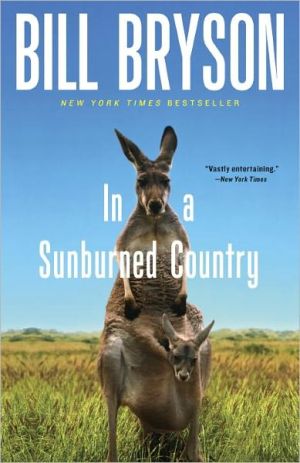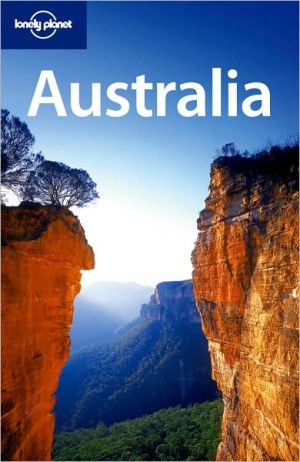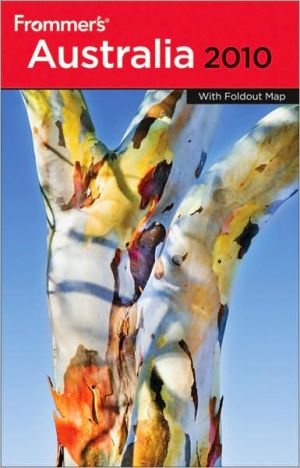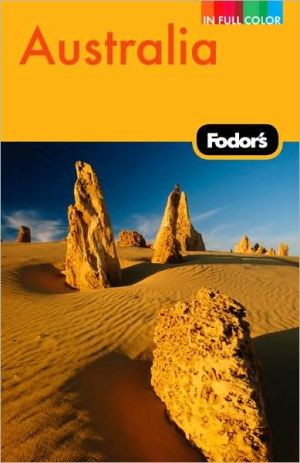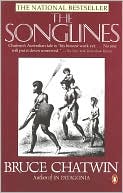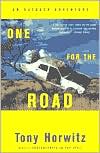In a Sunburned Country
Every time Bill Bryson walks out the door, memorable travel literature threatens to break out. His previous excursion along the Appalachian Trail resulted in the sublime national bestseller A Walk in the Woods. In A Sunburned Country is his report on what he found in an entirely different place: Australia, the country that doubles as a continent, and a place with the friendliest inhabitants, the hottest, driest weather, and the most peculiar and lethal wildlife to be found on the planet. The...
Search in google:
Compared to his Australian excursions, Bill Bryson had it easy on the Appalachian Trail. Nonetheless, Bryson has on several occasions embarked on seemingly endless flights bound for a land where Little Debbies are scarce but insects are abundant (up to 220,000 species of them), not to mention crocodiles.Taking listeners on a rollicking ride far beyond packaged-tour routes, IN A SUNBURNED COUNTRY introduces a place where interesting things happen all the time. Leaving no Vegemite unsavored, listeners will accompany Bryson as he dodges jellyfish while learning to surf at Bondi Beach, discovers a fish that can climb trees, dehydrates in deserts where temperatures leap to 140 degrees F, and tells the true story of the rejected Danish architect who designed the Sydney Opera House. Washington Post - Elizabeth Ward For those who...want to go, the book is as much a guide to behavior as a guide to places worth seeing and things worth doing. Be as open, curious, observant and funny as Bill Bryson, in other words, and Australians will give you the time of your life wherever you go on their sprawling riddle of a continent. That, as Bryson would put it, is really all we're saying.
Chapter 1\ i\ flying into australia, I realized with a sigh that I had forgotten again who their prime minister is. I am forever doing this with the Australian prime minister—committing the name to memory, forgetting it (generally more or less instantly), then feeling terribly guilty. My thinking is that there ought to be one person outside Australia who knows.\ But then Australia is such a difficult country to keep track of. On my first visit, some years ago, I passed the time on the long flight reading a history of Australian politics in the twentieth century, wherein I encountered the startling fact that in 1967 the prime minister, Harold Holt, was strolling along a beach in Victoria when he plunged into the surf and vanished. No trace of the poor man was ever seen again. This seemed doubly astounding to me—first that Australia could just lose a prime minister (I mean, come on) and second that news of this had never reached me.\ The fact is, of course, we pay shamefully scant attention to our dear cousins Down Under—not entirely without reason, of course. Australia is after all mostly empty and a long way away. Its population, just over 18 million, is small by world standards—China grows by a larger amount each year—and its place in the world economy is consequently peripheral; as an economic entity, it ranks about level with Illinois. Its sports are of little interest to us and the last television series it made that we watched with avidity was Skippy. From time to time it sends us useful things—opals, merino wool, Errol Flynn, the boomerang—but nothing we can’t actually do without. Above all, Australia doesn’t misbehave. It is stable and peaceful and good. It doesn’t have coups, recklessly overfish, arm disagreeable despots, grow coca in provocative quantities, or throw its weight around in a brash and unseemly manner.\ But even allowing for all this, our neglect of Australian affairs is curious. Just before I set off on this trip I went to my local library in New Hampshire and looked Australia up in the New York Times Index to see how much it had engaged our attention in recent years. I began with the 1997 volume for no other reason than that it was open on the table. In that year across the full range of possible interests—politics, sports, travel, the coming Olympics in Sydney, food and wine, the arts, obituaries, and so on—the Times ran 20 articles that were predominantly on or about Australian affairs. In the same period, for purposes of comparison, the Times ran 120 articles on Peru, 150 or so on Albania and a similar number on Cambodia, more than 300 on each of the Koreas, and well over 500 on Israel. As a place that caught our interest Australia ranked about level with Belarus and Burundi. Among the general subjects that outstripped it were balloons and balloonists, the Church of Scientology, dogs (though not dog sledding), Barneys, Inc., and Pamela Harriman, the former ambassador and socialite who died in February 1997, a misfortune that evidently required recording 22 times in the Times. Put in the crudest terms, Australia was slightly more important to us in 1997 than bananas, but not nearly as important as ice cream.\ As it turns out, 1997 was actually quite a good year for Australian news. In 1996 the country was the subject of just nine news reports and in 1998 a mere six. Australians can’t bear it that we pay so little attention to them, and I don’t blame them. This is a country where interesting things happen, and all the time.\ Consider just one of those stories that did make it into the Times in 1997, though buried away in the odd-sock drawer of Section C. In January of that year, according to a report written in America by a Times reporter, scientists were seriously investigating the possibility that a mysterious seismic disturbance in the remote Australian outback almost four years earlier had been a nuclear explosion set off by members of the Japanese doomsday cult Aum Shinrikyo.\ It happens that at 11:03 p.m. local time on May 28, 1993, seismograph needles all over the Pacific region twitched and scribbled in response to a very large-scale disturbance near a place called Banjawarn Station in the Great Victoria Desert of Western Australia. Some long-distance truckers and prospectors, virtually the only people out in that lonely expanse, reported seeing a sudden flash in the sky and hearing or feeling the boom of a mighty but far-off explosion. One reported that a can of beer had danced off the table in his tent.\ The problem was that there was no obvious explanation. The seismograph traces didn’t fit the profile for an earthquake or mining explosion, and anyway the blast was 170 times more power- ful than the most powerful mining explosion ever recorded in Western Australia. The shock was consistent with a large meteorite strike, but the impact would have blown a crater hundreds of feet in circumference, and no such crater could be found. The upshot is that scientists puzzled over the incident for a day or two, then filed it away as an unexplained curiosity—the sort of thing that presumably happens from time to time.\ Then in 1995 Aum Shinrikyo gained sudden notoriety when it released extravagant quantities of the nerve gas sarin into the Tokyo subway system, killing twelve people. In the investigations that followed, it emerged that Aum’s substantial holdings included a 500,000-acre desert property in Western Australia very near the site of the mystery event. There, authorities found a laboratory of unusual sophistication and focus, and evidence that cult members had been mining uranium. It separately emerged that Aum had recruited into its ranks two nuclear engineers from the former Soviet Union. The group’s avowed aim was the destruction of the world, and it appears that the event in the desert may have been a dry run for blowing up Tokyo.\ You take my point, of course. This is a country that loses a prime minister and that is so vast and empty that a band of amateur enthusiasts could conceivably set off the world’s first nongovernmental atomic bomb on its mainland and almost four years would pass before anyone noticed.* Clearly this is a place worth getting to know.\ * Interestingly, no Australian newspapers seem to have picked up on this story and the New York Times never returned to it, so what happened in the desert remains a mystery. Aum Shinrikyo sold its desert property in August 1994, fifteen months after the mysterious blast but seven months before it gained notoriety with its sarin attack in the Tokyo subway system. If any investigating authority took the obvious step of measuring the area around Banjawarn Station for increased levels of radiation, it has not been reported.\ and so, because we know so little about it, perhaps a few facts would be in order:\ Australia is the world’s sixth largest country and its largest island. It is the only island that is also a continent, and the only continent that is also a country. It was the first continent conquered from the sea, and the last. It is the only nation that began as a prison.\ It is the home of the largest living thing on earth, the Great Barrier Reef, and of the largest monolith, Ayers Rock (or Uluru to use its now-official, more respectful Aboriginal name). It has more things that will kill you than anywhere else. Of the world’s ten most poisonous snakes, all are Australian. Five of its creatures—the funnel web spider, box jellyfish, blue-ringed octopus, paralysis tick, and stonefish—are the most lethal of their type in the world. This is a country where even the fluffiest of caterpillars can lay you out with a toxic nip, where seashells will not just sting you but actually sometimes go for you. Pick up an innocuous cone shell from a Queensland beach, as innocent tourists are all too wont to do, and you will discover that the little fellow inside is not just astoundingly swift and testy but exceedingly venomous. If you are not stung or pronged to death in some unexpected manner, you may be fatally chomped by sharks or crocodiles, or carried helplessly out to sea by irresistible currents, or left to stagger to an unhappy death in the baking outback. It’s a tough place.\ And it is old. For 60 million years since the formation of the Great Dividing Range, the low but deeply fetching mountains that run down its eastern flank, Australia has been all but silent geologically. In consequence, things, once created, have tended just to lie there. So many of the oldest objects ever found on earth— the most ancient rocks and fossils, the earliest animal tracks and riverbeds, the first faint signs of life itself—have come from Australia.\ At some undetermined point in the great immensity of its past—perhaps 45,000 years ago, perhaps 60,000, but certainly before there were modern humans in the Americas or Europe—it was quietly invaded by a deeply inscrutable people, the Aborigines, who have no clearly evident racial or linguistic kinship to their neighbors in the region, and whose presence in Australia can only be explained by positing that they invented and mastered ocean- going craft at least 30,000 years in advance of anyone else, in order to undertake an exodus, then forgot or abandoned nearly all that they had learned and scarcely ever bothered with the open sea again.\ It is an accomplishment so singular and extraordinary, so uncomfortable with scrutiny, that most histories breeze over it in a paragraph or two, then move on to the second, more explicable invasion—the one that begins with the arrival of Captain James Cook and his doughty little ship HMS Endeavour in Botany Bay in 1770. Never mind that Captain Cook didn’t discover Australia and that he wasn’t even yet a captain at the time of his visit. For most people, including most Australians, this is where the story begins.\ The world those first Englishmen found was famously inverted—its seasons back to front, its constellations upside down—and unlike anything any of them had seen before even in the near latitudes of the Pacific. Its creatures seemed to have evolved as if they had misread the manual. The most characteristic of them didn’t run or lope or canter, but bounced across the landscape, like dropped balls. The continent teemed with unlikely life. It contained a fish that could climb trees; a fox that flew (it was actually a very large bat); crustaceans so large that a grown man could climb inside their shells.\ In short, there was no place in the world like it. There still isn’t. Eighty percent of all that lives in Australia, plant and animal, exists nowhere else. More than this, it exists in an abundance that seems incompatible with the harshness of the environment. Australia is the driest, flattest, hottest, most desiccated, infertile, and climatically aggressive of all the inhabited continents. (Only Antarctica is more hostile to life.) This is a place so inert that even the soil is, technically speaking, a fossil. And yet it teems with life in numbers uncounted. For insects alone, scientists haven’t the faintest idea whether the total number of species is 100,000 or more than twice that. As many as a third of those species remain entirely unknown to science. For spiders, the proportion rises to 80 percent.\ I mention insects in particular because I have a story about a little bug called Nothomyrmecia macrops that I think illustrates perfectly, if a bit obliquely, what an exceptional country this is. It’s a slightly involved tale but a good one, so bear with me, please.\ In 1931 on the Cape Arid peninsula in Western Australia, some amateur naturalists were poking about in the scrubby wastes when they found an insect none had seen before. It looked vaguely like an ant, but was an unusual pale yellow and had strange, staring, distinctly unsettling eyes. Some specimens were collected and these found their way to the desk of an expert at the National Museum of Victoria in Melbourne, who identified the insect at once as Nothomyrmecia. The discovery caused great excitement because, as far as anyone knew, nothing like it had existed on earth for a hundred million years. Nothomyrmecia was a proto-ant, a living relic from a time when ants were evolving from wasps. In entomological terms, it was as extraordinary as if someone had found a herd of triceratops grazing on some distant grassy plain.\ An expedition was organized at once, but despite the most scrupulous searching, no one could find the Cape Arid colony. Subsequent searches came up equally empty-handed. Almost half a century later, when word got out that a team of American scientists was planning to search for the ant, almost certainly with the kind of high-tech gadgetry that would make the Australians look amateurish and underorganized, government scientists in Canberra decided to make one final, preemptive effort to find the ants alive. So a party of them set off in convoy across the country.\ On the second day out, while driving across the South Australia desert, one of their vehicles began to smoke and sputter, and they were forced to make an unscheduled overnight stop at a lonely pause in the highway called Poochera. During the evening one of the scientists, a man named Bob Taylor, stepped out for a breath of air and idly played his flashlight over the surrounding terrain. You may imagine his astonishment when he discovered, crawling over the trunk of a eucalyptus beside their campsite, a thriving colony of none other than Nothomyrmecia.\ Now consider the probabilities. Taylor and his colleagues were eight hundred miles from their intended search site. In the almost 3 million square miles of emptiness that is Australia, one of the handful of people able to identify it had just found one of the rarest, most sought-after insects on earth—an insect seen alive just once, almost half a century earlier—and all because their van had broken down where it did. Nothomyrmecia, incidentally, has still never been found at its original site.\ You take my point again, I’m sure. This is a country that is at once staggeringly empty and yet packed with stuff. Interesting stuff, ancient stuff, stuff not readily explained. Stuff yet to be found.\ Trust me, this is an interesting place.
\ From Barnes & NobleThe Barnes & Noble Review\ The perpetually hilarious Bill Bryson travels to Australia in his latest adventure, where he should feel right at home among the eccentric locals. Crocodiles, insects, giant worms, and venomous jellyfish are just the beginning of Bryson's problems as he navigates the beaches and deserts of this immense, sunbaked country. Arriving just in time for the 2000 Summer Olympics in Sydney, In a Sunburned Country is comic travel writing at its best. \ Bryson reveals Australia's surprising geographical and biological diversity as he braves the baking outback, hikes through the ancient rainforests, and swims along the Great Barrier Reef, always highlighting the most unusual and unforgettable people and places. "Give them a bale of chicken wire, some fiberglass and a couple of pots of paint and they will make you, say, an enormous pineapple or strawberry or, as here, a lobster," Bryson writes. Bryson does indeed visit the 56-foot monstrosity known as the Big Lobster, one of 60 such attractions found all over Australia, "like leftover props from a 1950s horror movie." Bryson's approach to Australian history comes across as wonderfully off-kilter as well. Bryson delights in the tale of Harold Holt, the late prime minister, who vanished while swimming at Cheviot Beach and was never heard from again. There is a memorial to Holt in Melbourne -- believe it or not, it's a swimming pool. Upon hearing this delicious irony, Bryson simply states: "This is a terrific country."\ But Bryson is more than a literary comedian. He is a travel writer, and a great one at that. He juxtaposes those moments of intense silliness with beautiful, insightful passages: "On every side the desert lapped at the town like floodwater." One of Bryson's most profoundly spiritual moments on the trip -- for no traveler, not even the irrepressible Bryson, is immune to such moments -- is when he stands in front of Uluru, also known as Ayer's Rock. Uluru is a massive red rock, at least a hundred million years old, that stands alone on an empty plain. As he approaches it, Bryson comments "somehow you feel certain that this large, brooding, hypnotic presence has an importance to you at the species level." Bryson explores Austrlia's incredible biological diversity, visiting a wide range of ecosystems and reporting on the unique creatures he finds. He also examines Australia's eccentric history, from its early days, when botched expeditions into the outback resulted in tragic loss of life and limb, to disastrous attempts at altering the native flora and fauna. As Bryson roams Australia's spatial and cultural planes, he leaves the reader with a strong desire to follow in his footsteps. After all, who wouldn't want to see the Big Lobster face to face?\ —Julie Carr\ \ \ \ \ \ Elizabeth WardFor those who...want to go, the book is as much a guide to behavior as a guide to places worth seeing and things worth doing. Be as open, curious, observant and funny as Bill Bryson, in other words, and Australians will give you the time of your life wherever you go on their sprawling riddle of a continent. That, as Bryson would put it, is really all we're saying.\ — Washington Post\ \ \ Library JournalBryson's latest travelog takes him to Australia, which, he blithely points out, has "more things that will kill you than anywhere else." Such lethal "attractions" include ten snakes with the deadliest venom in the world, poisonous spiders, lethal seashells, toxic plants, hazardous ocean riptides, sharks, and box jellyfish that can effectively end the beach season. What makes Bryson the most entertaining and interesting travel writer around is his singular facility to fashion a unique whole from historical facts, topographical observations, and geographical ramblings. He travels by train, car, plane, and on foot, and any place is fair game for his attention. He marvels at the uniqueness of place names such as Mullumbimby Ewylamartup, Jiggalong, and Tittybong. He freely comments on whether or not meals or lodgings are satisfactory and the quality of services rendered. Bryson visits Gippsland, where the world's largest earthworms (up to 12 feet in length) live. He travels to Uluru, home to the world's largest monolith. And he marvels at the truly wondrous beauty of the Great Barrier Reef, the world's largest living thing. Along the way, he discourses on Australia's history, including her unique start as a prison colony and the existence of the Aborigines, which is both mysterious and ancient. The author conveys the friendliness of the Australian people, their unstinting hospitality, and the wondrous nature of this fascinating country. Listeners will frequently laugh out loud and may even want to read the book as well. Essential for nearly everyone--especially anyone contemplating a trip Down Under. Highly and enthusiastically recommended for all libraries.--Gloria Maxwell, Penn Valley Community Coll., Kansas City, MO Copyright 2000 Cahners Business Information.\ \ \ \ \ National Geographic TravelerA laugh-out-loud account....If you were to cross John Muir's writings with Dave Barry's you'd end up with A Walk in the Woods.\ \ \ \ \ Lane HartillOnly in Australia would you find a numb ray that can light you up with 220 volts of electricity or a jellyfish called a snottie. And only Bryson could make them sound so fun. Bryson's most recent travel yarn took him to the baking corners of Australia. Local oddities fill these pages - a museum with 12-foot-long earthworms and lethal seashells. His observations of the mundane and bizarre are so hilarious that it would be difficult to put the book down, even if you were attacked by a wombat. \ —The Christian Science Monitor\ \ \ \ \ Robert DreweNot since Anthony Trollope has a foreign writer so trumpeted Australia's virtues. Bryson seems like the perfect guest, affable and easily entertained, Hand him a beer and you've got a friend for life. \ —The Times Literary Supplement\ \ \ \ \ Annette KobakThe book exudes Bryson's sheer pleasure in the untapped narrative possibilities of [Australia] . . . In return, Australia serves Bryson brilliantly. . . . It wasn't the splendor of the view that prompted his bliss, it was the utter compatibility of his sense of humor with Australia's.\ —The New York Times Book Review\ \ \ \ \ Kirkus ReviewsJust in time for Sydney's upcoming Olympic games, this travel narrative from veteran wanderer Bryson (I'm a Stranger Here Myself, 1999, etc.) provides an appreciative, informative, and hilarious portrait of the land Down Under. "And so once more to the wandering road," declares Bryson—which is music to the ears of his many deserving fans. This time it is Australia, a country tailor-made to surrender just the kind of amusing facts Bryson loves. It was here, after all, that the Prime Minister dove into the surf of Victoria one day and simply disappeared—the prime minister, mind you. There are more things here to kill you than anywhere else in the world: all of the ten most poisonous snakes, sharks and crocodiles in abundance, the paralytic tick, and venomous seashells that will "not just sting you but actually sometimes go for you." A place harsh and hostile to life, "staggeringly empty yet packed with stuff. Interesting stuff, ancient stuff, stuff not readily explained." And Bryson finds it everywhere: in the Aborigines (who evidently invented and mastered oceangoing craft 30,000 years before anyone else, then promptly forgot all about the sea), in the Outback ("where men are men and sheep are nervous"), in stories from the days of early European exploration (of such horrific proportions they can be appreciated only as farce), and in the numerous rural pubs (where Bryson learns the true meaning of a hangover). Bryson is still open to wonder at the end of his pilgrimage: the grand and noble Uluru (once known as Ayer's Rock) reaches right down into his primordial memory and gives it a stir. "I'm justobserving that if Iwere looking for an ancient starship this is where I would start digging. That's all I'm saying." Bryson is a real traveler, the kind of guy who can be entertained by (and be entertaining about) a featureless landscape scattered with "rocks the color of bad teeth." Fortunately for him and for us, there's a lot more to Australia than that. First serial to Outside Magazine; Book-of-the-Month Club selection\ \ \ \ \ From the Publisher"In the late afternoon, I stopped at a roadhouse for gas and coffee. I studied my book of maps . . . Then, having nothing better to do, I leafed through the index and amused myself, in a very low-key way, by looking for ridiculous names, of which Australia has a respectable plenitude. I am thus able to report that the following are all real places: Wee Waa, Poowons, Borrumbuttock, Suggan Buggan, Boomahnoomoonah, Waaia, Mullumbimby Ewylamartup, Jiggalong, and the supremely satisfying Tittybong."\ \
